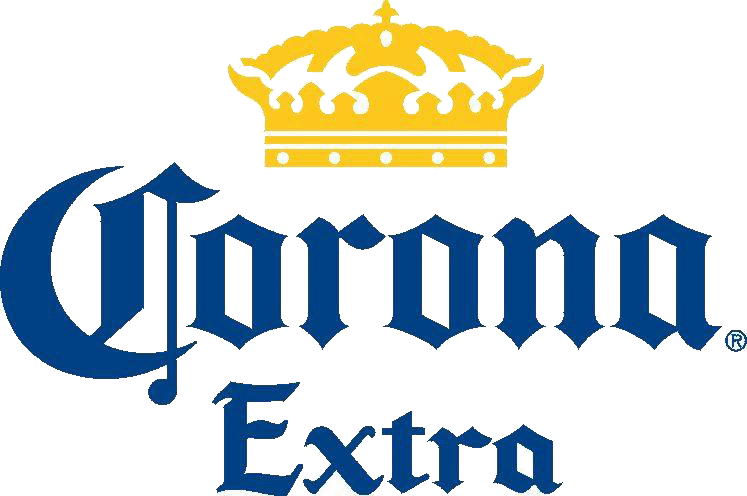Corona Extra
Review Date1/19/2003
Try?
Re-buy?
Several years
ago, something very strange happened here in the United States. Corona, a
bland and fizzy lager from Mexico, overtook Heineken in sales to become the
number one selling imported beer in America, a position Heineken had held
for decades. There are a number of factors that led to this occurrence, but
overall it was probably inevitable given the current demographics and tastes
in the US today.
Heineken, of course, is no paramount of flavor in the beer world. It does though have more taste and hops to it than Corona does. But how did one fairly innocuous beer replace another at the head of the imported beer totem in America? One need only look to the best selling domestic brew in the United States, Budweiser, to see the type of beer American consumers of today prefer.
Certainly, there is more to do with the success of Corona today; after all there are a veritable plethora of beers imported into the U.S. market, many of them very similar in many respects to Corona Extra. One bonus Corona has in its favor is the large Hispanic population in the United States, many of whom emigrated from Mexico and are familiar with the brand. The main factor in the success of Corona, however, is marketing. In the late eighties and early nineties, Corona’s importers successfully associated their beer with success itself.
Part of that marketing scheme was the attractive clear glass painted label bottles, often seen fashionably adorned with a wedge of lime ensconced in the mouth. This despite the fact that clear glass is about the worst possible packaging for beer. Yet, Corona Extra became a beer that affluent Yuppies wanted to be seen drinking, because drinking a beer like Corona meant that one’s taste was sophisticated and superior to that of the poor slob over in the corner drinking his Bud (the brewer of which, Anheuser-Busch, now ironically owns a 50% stake in Grupo Modelo, the brewer of Corona).
In addition, Corona Extra has always been associated with exotic locations and tropical places. Even today, ads you’ll see on Television will have very little to do with the beer itself, instead featuring a relaxing consumer enjoying a bottle on a bright and sunny beach with warm tropical waters splashing in the background. Not a word is likely to be spoken, and the viewer is left to create his own mental association.
Of course, you pay for all of this, generally around $7 to $8 a six-pack or $20 to $24 a case. This is my main beef with Corona Extra: all things being equal, it’s way overpriced. There are many more imported brews available for the same price that I much prefer, including the delicious and malty Negra Modelo from the same brewery that gives us Corona.
Grupo Modelo commands a whopping 61% market share in Mexico, where Corona Extra is sold for a much more reasonable price. Established in 1925, the company produces several different brands with Corona Extra as its flagship brew. The company operates a number of breweries throughout Mexico and also distributes Anheuser-Busch products there.
Several years back, I attended a beer dinner that featured renowned beer savant Michael Jackson as guest speaker. As fate would have it, I ended up using a urinal directly next to none other than the Beer Hunter himself, and as I and others there talked about how you don’t really buy beer (you just rent it), Jackson quipped that no matter what color the beer was on the way in it all looked like Corona on the way out.
There is an urban legend concerning Corona, one that has made its way around on the Internet and through beer drinker circles. It concerns an alleged photograph of brewery workers urinating into one of the brew kettles. I have never seen the photo and doubt the story’s veracity. Possibly it was started by a jealous competitor or someone with a dislike for Corona for whatever reason.
As to the beer itself, Corona Extra pours to a pale yellow color with a fizzy short-lived head formation and a very faint touch of malt in the nose. The palate is light and watery with a great deal of carbonation and little flavor. Some light notes of malt and corn are discernible. The finish is thin and offers little in the way of hop character. If you try really hard, you might be able to imagine a little.
It’s hard to enter a Mexican restaurant and not find Corona Extra on the menu. And to be fair, it makes a decent enough beverage to wash down spicy salsas, tacos, burritos and tamales. Just don’t expect it to complement those dishes. If you want a beer that will offer a flavor to enjoy alongside those dishes, I recommend you order a Negra Modelo or Dos Equis instead.
Today, Corona Extra boasts that it is “miles from ordinary”. The reality, however, is quite the opposite: this is a very ordinary beer.
Heineken, of course, is no paramount of flavor in the beer world. It does though have more taste and hops to it than Corona does. But how did one fairly innocuous beer replace another at the head of the imported beer totem in America? One need only look to the best selling domestic brew in the United States, Budweiser, to see the type of beer American consumers of today prefer.
Certainly, there is more to do with the success of Corona today; after all there are a veritable plethora of beers imported into the U.S. market, many of them very similar in many respects to Corona Extra. One bonus Corona has in its favor is the large Hispanic population in the United States, many of whom emigrated from Mexico and are familiar with the brand. The main factor in the success of Corona, however, is marketing. In the late eighties and early nineties, Corona’s importers successfully associated their beer with success itself.
Part of that marketing scheme was the attractive clear glass painted label bottles, often seen fashionably adorned with a wedge of lime ensconced in the mouth. This despite the fact that clear glass is about the worst possible packaging for beer. Yet, Corona Extra became a beer that affluent Yuppies wanted to be seen drinking, because drinking a beer like Corona meant that one’s taste was sophisticated and superior to that of the poor slob over in the corner drinking his Bud (the brewer of which, Anheuser-Busch, now ironically owns a 50% stake in Grupo Modelo, the brewer of Corona).
In addition, Corona Extra has always been associated with exotic locations and tropical places. Even today, ads you’ll see on Television will have very little to do with the beer itself, instead featuring a relaxing consumer enjoying a bottle on a bright and sunny beach with warm tropical waters splashing in the background. Not a word is likely to be spoken, and the viewer is left to create his own mental association.
Of course, you pay for all of this, generally around $7 to $8 a six-pack or $20 to $24 a case. This is my main beef with Corona Extra: all things being equal, it’s way overpriced. There are many more imported brews available for the same price that I much prefer, including the delicious and malty Negra Modelo from the same brewery that gives us Corona.
Grupo Modelo commands a whopping 61% market share in Mexico, where Corona Extra is sold for a much more reasonable price. Established in 1925, the company produces several different brands with Corona Extra as its flagship brew. The company operates a number of breweries throughout Mexico and also distributes Anheuser-Busch products there.
Several years back, I attended a beer dinner that featured renowned beer savant Michael Jackson as guest speaker. As fate would have it, I ended up using a urinal directly next to none other than the Beer Hunter himself, and as I and others there talked about how you don’t really buy beer (you just rent it), Jackson quipped that no matter what color the beer was on the way in it all looked like Corona on the way out.
There is an urban legend concerning Corona, one that has made its way around on the Internet and through beer drinker circles. It concerns an alleged photograph of brewery workers urinating into one of the brew kettles. I have never seen the photo and doubt the story’s veracity. Possibly it was started by a jealous competitor or someone with a dislike for Corona for whatever reason.
As to the beer itself, Corona Extra pours to a pale yellow color with a fizzy short-lived head formation and a very faint touch of malt in the nose. The palate is light and watery with a great deal of carbonation and little flavor. Some light notes of malt and corn are discernible. The finish is thin and offers little in the way of hop character. If you try really hard, you might be able to imagine a little.
It’s hard to enter a Mexican restaurant and not find Corona Extra on the menu. And to be fair, it makes a decent enough beverage to wash down spicy salsas, tacos, burritos and tamales. Just don’t expect it to complement those dishes. If you want a beer that will offer a flavor to enjoy alongside those dishes, I recommend you order a Negra Modelo or Dos Equis instead.
Today, Corona Extra boasts that it is “miles from ordinary”. The reality, however, is quite the opposite: this is a very ordinary beer.
And remember, try a new beer today, and drink outside the box.
*Pricing data accurate at time of review or latest update. For reference only, based on actual price paid by reviewer.
(B)=Bottled
(D)=Draft

